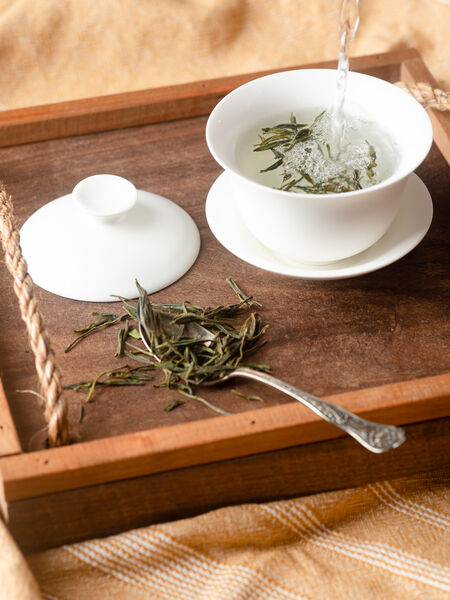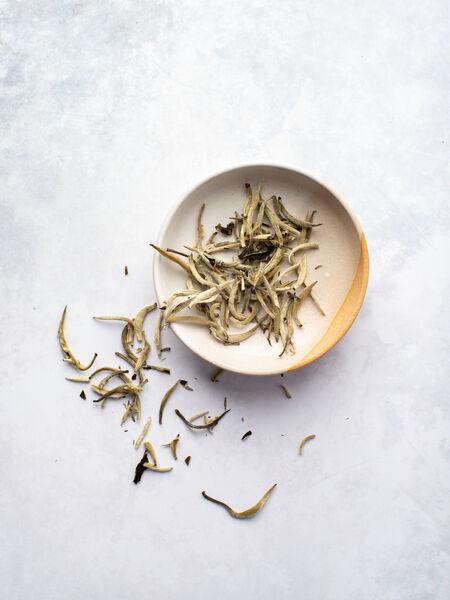Yellow Tea Explained: Flavor, History, Brewing


Black Tea, Green Tea, White Tea... Yellow Tea?
Tea comes in a variety of colors and shades depending on the variety you brew. Though Green Tea often brews a shade of yellow, there an entirely separate genre of tea called “Yellow Tea”. A rare variety of tea, it’s not every tea store that offers this little-discussed category of tea, however Masters by Adagio Teas offers a selection of Yellow Tea, bringing this prized tea into more teapots.
But what is Yellow Tea exactly? Is it right for my tea table? How do I even go about brewing this tea? And which Yellow Tea do I try first? Put the kettle on: today we’ll be exploring the world of Yellow Tea.
What Makes a Tea Yellow?
First thing’s first: what even is Yellow Tea?
For a refresher, the criteria for what typically (though not always) places a tea in a particular category is the amount of oxidation the tea undergoes during production: green teas have no oxidation, black teas are fully oxidized, and white teas have a small amount of oxidation. The exceptions to this rule are oolongs (which can be heavily or lightly oxidized as well as undergo additional steps in production) and Pu-erh (which undergoes fermenting).
In some ways, Yellow Tea is similar to Green or White Tea, even sometimes being considered a subcategory of green tea. However, Yellow Teas undergo an additional level of processing that green teas do not. Yellow Tea leaves are steamed for a much longer period than green tea, and then wrapped in paper for several hours for additional steaming, allowing the leaves to slightly ferment, resulting in a yellowing of the tea leaves for a milder, less astringent flavor compared to green tea. Because this process is rather tricky, only specialized tea masters are qualified to produce this tea, resulting in a high quality (though rare) tea.
Though first produced in China, Yellow Tea is also popular in Korean tea production, though both Chinese and Korean tea masters approach yellow tea differently. Some of the major differences are that Korean Yellow Tea (or Hwangcha) is more oxidized, is closer to oolong or black tea rather than green tea, and produces a darker brew than the lighter golden version from China.
How to Brew Yellow Tea
Because of its similarity to green tea, brewing Yellow Tea isn’t all that different from brewing green tea. The main concern is avoiding pulling the astringent flavors out of the leaves, so water temperature and brewing time are crucial to brewing the perfect cup of Yellow Tea.
Using one teaspoon of Yellow Tea per cup, pour water that has been heated anywhere from 165-175F over the tea leaves. Allow the leaves to steep for two or three minutes before removing and enjoying. Like with some brewing techniques like Gongfu Brewing, some Yellow Tea fans warm the brewing vessel by pouring hot water into it and emptying the vessel after a few seconds before adding the tea leaves for brewing. This way, the water temperature will remain consistent during brewing.
Try These Yellow Teas for yourself!
Ready to embark on your Yellow Tea journey? Try these Masters by AdagioTeas Yellow Teas at your next tea brewing session!
Meng Ding Huang Ya
From the heights of Mount Meng in the Sichuan Province of China, Meng Ding Huang Ya is a lovely mild tea. If you’re a fan of Chinese green teas, this is a great stepping stone to the world of Yellow Tea, since Meng Ding Huang Ya is very similar to its green tea cousins (In fact, upon first glance of this tea’s leaves, you might assume that it’s a green tea with a golden tinge.) Meng Ding Huang Ya is a pleasantly warm tea with a nutty flavor, and though the leaves have been fired four times, it does not have a strong smokey flavor.
Jun Shan Yin Zhen
One of China’s most prized teas (and not even just Yellow Tea, but all of Chinese Tea), Jun Shan Yin Zhen has a naturally fruity flavor without the addition of any fruit. Though it has a similar name to the prized white tea https://www.mastersteas.com/teas/bai-hao-yin-zhen.html Bai Hao Yin Zhen (Yin Zhen being translated to “Silver Needles”), Jun Shan Yin Zhen is indeed a yellow tea and has a stronger flavor than its white tea cousin (though not too overpowering). Sip this tea when you want to enjoy something with a toasty aroma and a fruity essence.
